Ruchira takes us on a tour of Venice, a quaint city built on a cluster of 118 islands, in the weekly column, exclusively for Different Truths.
This quaint city built on a cluster of 118 islands, off the coast of northeastern Italy, has evoked fantasy, and imagination down the centuries. Its appearance has remained static for more than 600 years now. The City of Canals as it is nicknamed looks straight out of a picture book. Though not as copious as Florence yet Venice is a treasure trove of Renaissance art & architecture. Visitors from all parts of the globe flock here to drink its beauty in depth. In recent times the place has emerged as is a favorite honeymoon destination for affluent, fashionable young couples.
Venice on Foot
When I was in Venice for two pleasant October days, many moons ago, I was barely into my twenties. So the honeymoon fantasy did not happen (giggle). After our group arrived here we were taken directly to Murano – one of the islands which comprise Venice – to get a firsthand experience of glass blowing art for which the city is reputed. It was wonderful to watch how the workers deftly handled the molten mass lending it fantastic eye-catching shapes in the space of few minutes. Yes, it was an exciting array of vases, bottles, animal and bird decoration pieces and what have you.
Of Canals & Bridges
We were amazed to discover there were no roads in Venice. Instead, the entire city was crisscrossed by 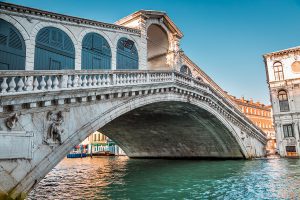 canals which functioned as street, lanes by-lanes and alleys. The most outstanding one of them all is the famous Grand Canal which is doubles up as the main road or the highway. Next, we went to the Bridge of Sighs. This 16th-century bridge links the interrogation rooms in a building known as Doge’s Palace to the New Prison across the Rio di Palazzo (a waterway).It was designed by a renowned architect Antonio Contino. According to a popular legend, the name of the bridge comes from the fact that condemned prisoners would “sigh” while catching their final glimpse of the beautiful city, on their way to the gallows. Some such instances might have occurred. However, it is also believed that by the time the bridge was completed, the practice of immediate executions was obsolete.
canals which functioned as street, lanes by-lanes and alleys. The most outstanding one of them all is the famous Grand Canal which is doubles up as the main road or the highway. Next, we went to the Bridge of Sighs. This 16th-century bridge links the interrogation rooms in a building known as Doge’s Palace to the New Prison across the Rio di Palazzo (a waterway).It was designed by a renowned architect Antonio Contino. According to a popular legend, the name of the bridge comes from the fact that condemned prisoners would “sigh” while catching their final glimpse of the beautiful city, on their way to the gallows. Some such instances might have occurred. However, it is also believed that by the time the bridge was completed, the practice of immediate executions was obsolete.
Churches & Palazzos
The beautiful 15th-century palazzo Ca’d’Oro, was designed by architect Giovanni Bon and his son Bartolomeo. Although the original gold façade which gave the place its nickname is gone, the now pink-and-white building houses magnificent works of art.
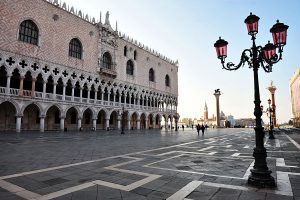 A 17th-century church, Santa Maria Della Salute is located at the point where the Grand Canal meets the Venetian Lagoon. Incidentally, Venice actually floats on the waters of the Adriatic Sea. Hence the sobriquet Queen of Adriatic. The immaculate white church was consecrated to the Virgin Mary for saving the city from a plague that decimated one-third of its population. Besides the altar sculpture that depicts the “Madonna of Health” driving the demon Plague from Venice, the church has a mega collection of artworks by Titian, a reputed Renaissance painter. Again the predominant theme is scenes from the Holy Bible.
A 17th-century church, Santa Maria Della Salute is located at the point where the Grand Canal meets the Venetian Lagoon. Incidentally, Venice actually floats on the waters of the Adriatic Sea. Hence the sobriquet Queen of Adriatic. The immaculate white church was consecrated to the Virgin Mary for saving the city from a plague that decimated one-third of its population. Besides the altar sculpture that depicts the “Madonna of Health” driving the demon Plague from Venice, the church has a mega collection of artworks by Titian, a reputed Renaissance painter. Again the predominant theme is scenes from the Holy Bible.
A visit to the Ca’ Rezzonico is a must. Situated bang on the Grand Canal the palace has been used as the venue for the shooting of many a Hollywood blockbuster. The palace now functions as a museum of Renaissance art. Did you know the famous British poet Robert Browning had lived in this spacious mansion during his sojourn in Italy?
The Rialto Bridge is one of the four bridges spanning the Grand Canal. For three centuries, it was the only way to cross the Grand Canal on foot. The single span stone bridge, designed by Antonio da Ponte was completed in 1591 to replace the original wooden bridge. The bridge has emerged as one of the architectural icons of Venice.
Venice’s main public square is the Piazza San Marco. This has always been the city’s nerve centre and the most happening place. Dotted with numerous open-air cafés and famous edifices. Tourists need to traverse the square to visit the canal network.
Ride on the Waters
The ideal way to explore Venice is to take a gondola ride down the Grand Canal. Here you will not find 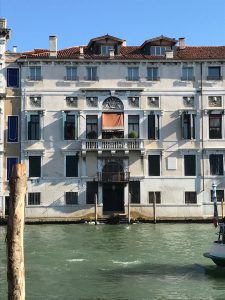 taxis, cars or buses. They have replaced the slim looking gondolas, water taxis and vaporetti (water buses) for commuting. The Grand Canal meanders through the middle of the city – Saint Mark’s Basilica to be precise – to the Church of Santa Chiara. Its two banks are dotted with Romanesque, Gothic and Renaissance buildings. While looking around from my seat on the Vaporetto I was lucky enough to spot the majestic residence of Lord Byron the famous British Romantic poet who had spent a few years in this picturesque city. His details are inscribed on a tablet near the front door.
taxis, cars or buses. They have replaced the slim looking gondolas, water taxis and vaporetti (water buses) for commuting. The Grand Canal meanders through the middle of the city – Saint Mark’s Basilica to be precise – to the Church of Santa Chiara. Its two banks are dotted with Romanesque, Gothic and Renaissance buildings. While looking around from my seat on the Vaporetto I was lucky enough to spot the majestic residence of Lord Byron the famous British Romantic poet who had spent a few years in this picturesque city. His details are inscribed on a tablet near the front door.
If you have enough time on your hands, it is worthwhile to go on a gondola ride early in the morning. The sun’s rays shimmering on the waters is a visual delight. After sundown, the Canal’s contour changes. The silhouettes of the buildings coupled with lights spilling from numerous windows and doorways lend it the otherworldly look.
©Ruchira Adhikari Ghosh
Photos from the Internet
#Venice #LordByron #Gandola #GrandCanal #Churches #TimeToVisitVenice #VeniceTour #VeniceOnFoot #GoticAndRenaissanceArchitecture #VeniceTrip #118IslandsOfVenice #TravelAndGetaway #SliceOfLice #DifferenTruths

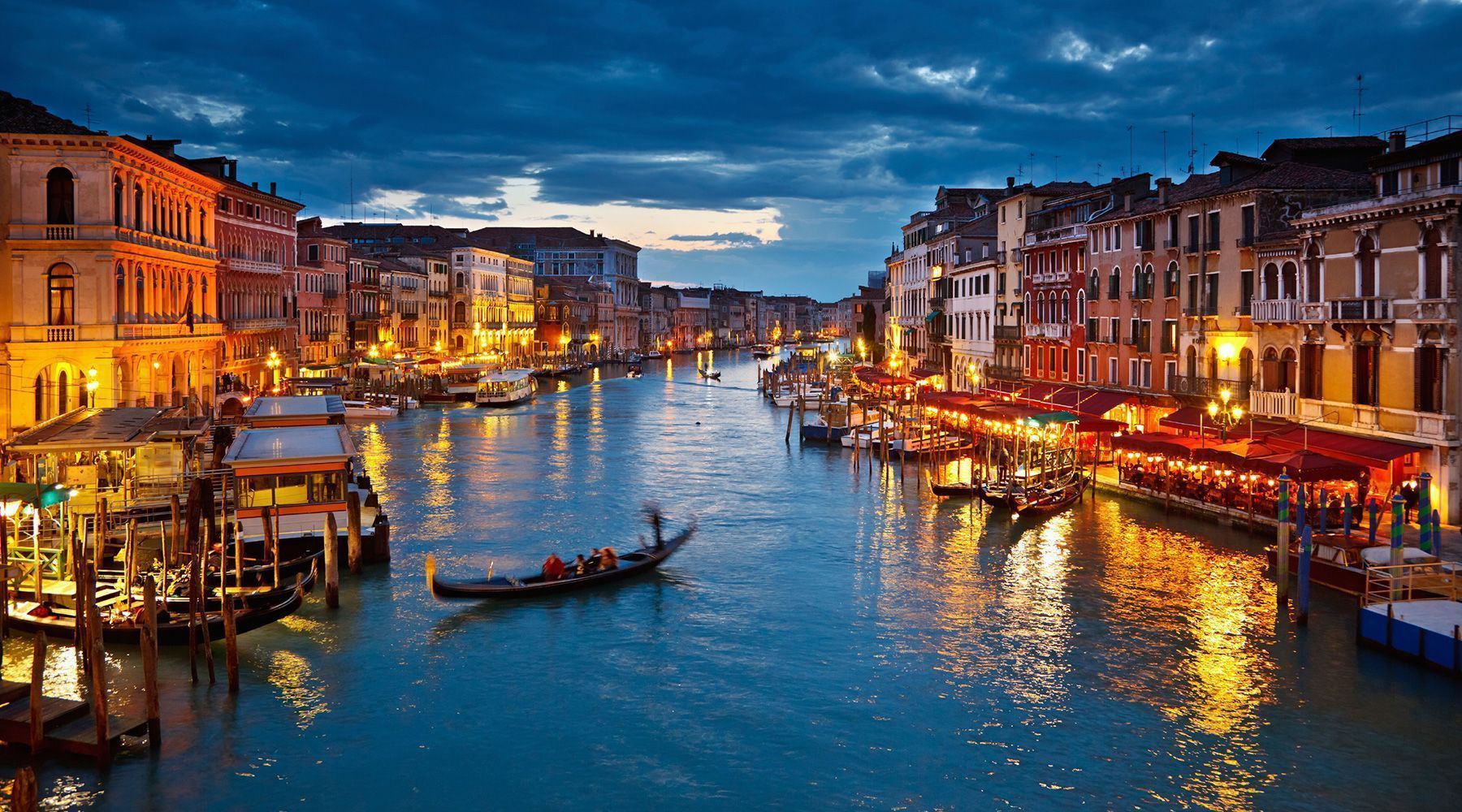
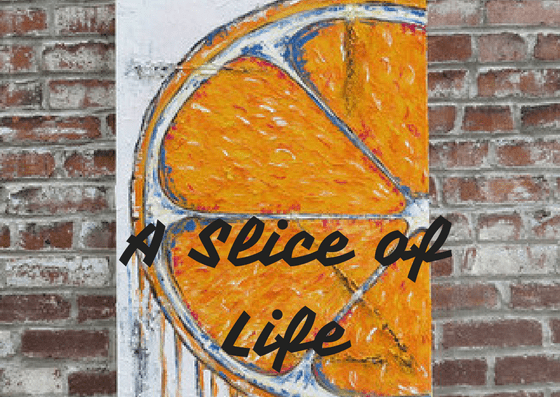
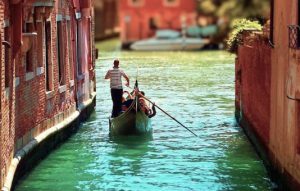



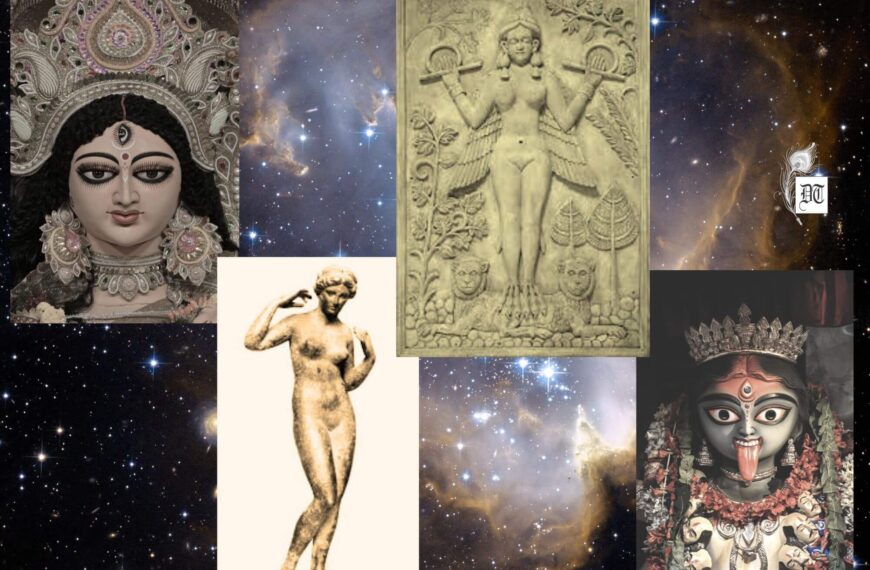
 By
By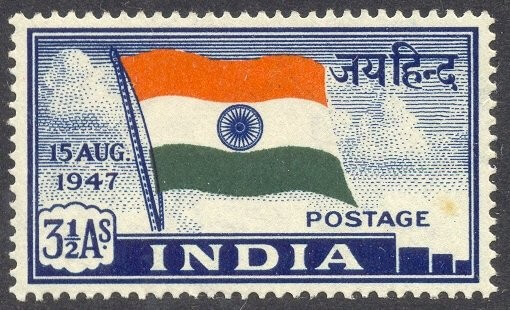
 By
By

 By
By